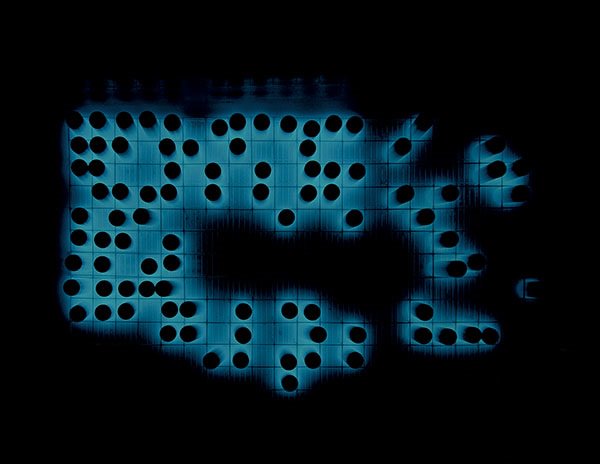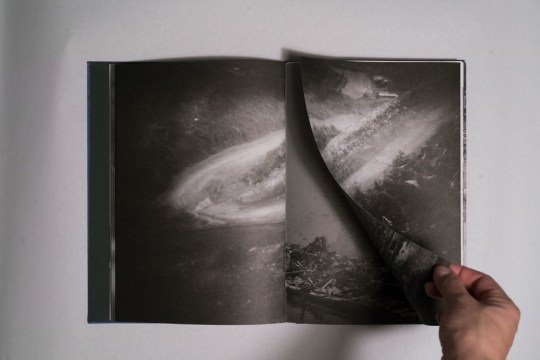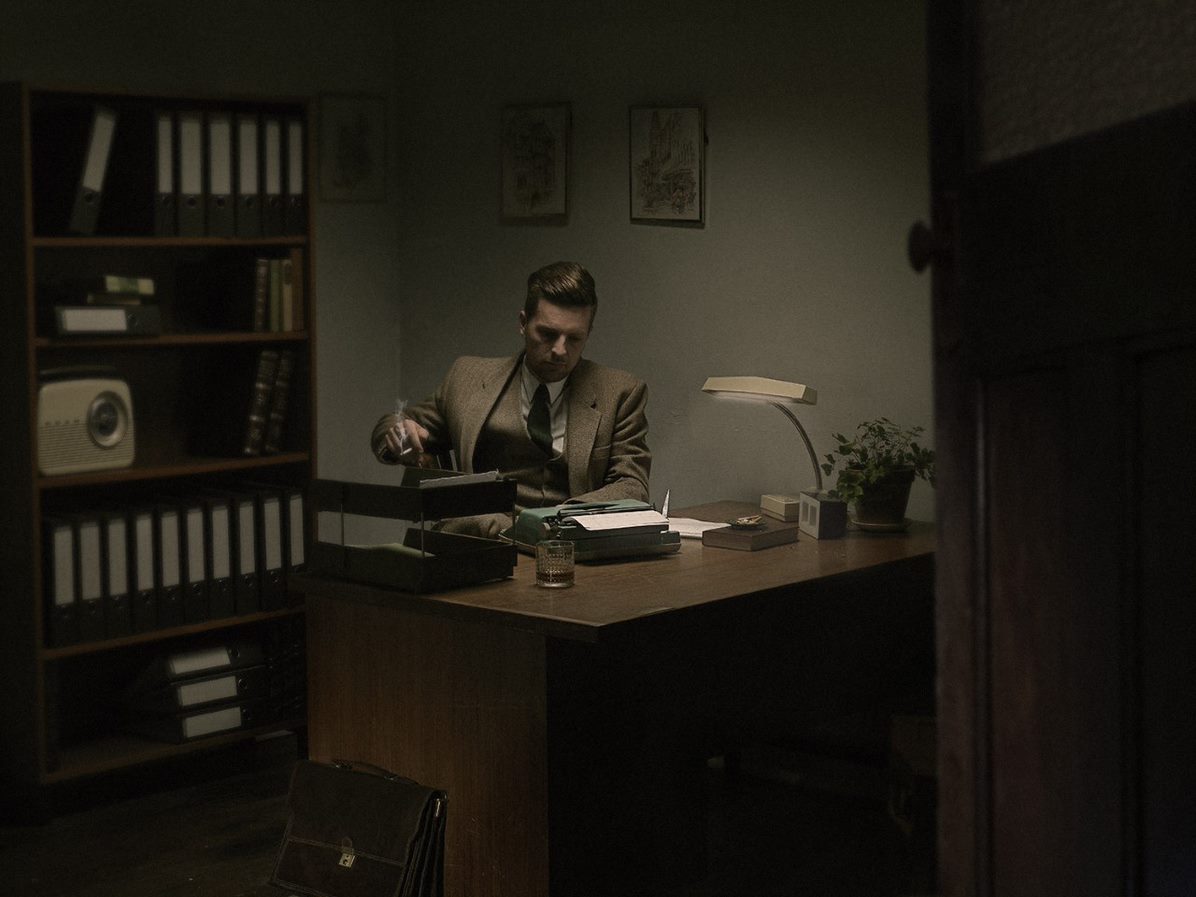The BA Photography Studios for Semester 1, 2021 are described below. These are the options for the second and third year students offered under the following course codes:
Photography Studio 2 VART 3595 (2nd year)
Photography Studio 4 VART 3598 (3rd year)
Please find link to the course guide VART3595 or VART3598.
Please read them carefully and decide upon your first, second and third preferences.
Provided you are enrolled in one of these courses, you will be able to nominate your preferences through myTimetable between 29th of January and the 8th of February, 2021.
IMPORTANT – You must enter three different preferences. Every effort will be made to place you in your first or second preference. Allocations are made on the basis of space available and group balance, with the higher year level being given priority (i.e it is not 'first come, first served').
 Taryn Simon, Nuclear Waste Encapsulation and Storage Facility, Cherenkov Radiation Hanford Site, U.S. Department of Energy Southeastern Washington State, 2007.
Taryn Simon, Nuclear Waste Encapsulation and Storage Facility, Cherenkov Radiation Hanford Site, U.S. Department of Energy Southeastern Washington State, 2007.1. Expanded Documentary: Picturing Power (Collingwood Studio*)
Most of what matters in our lives takes place in our absence. The narrator in the Salman Rushdie novel Midnight’s Children¹
A truly critical social documentary will frame the crime, the trial, and the system of justice and its official myths. Allan Sekula²
How can we use photography to examine the often invisible power structures that shape our lives?
Photography is a conduit for power, influencing our formations of citizenship, acting as surveillance, creating normative representations, shaping our identities, and providing tools for the constitution of the self (Cook, 2018). Photography is also used as a tool to observe and critique the world, and to communicate ideas that counter mainstream narratives and representations. This studio is a critical inquiry into photography’s complex relationship to power—both the way it is implicated in maintaining regimes of power and how it is used to critique them. Together we will explore how photography can be used to study the forces and systems that govern our lives, shape our desires, and design our worlds. We will do this by engaging with theories of power as they relate to photography.
Drawing on historical and contemporary examples of photographers and artists who have used photography to expose conditions of power, students will be supported to create a body of work that explores power and its articulations. Lectures and readings will introduce you to photography’s relationship to imperialism, surveillance, consumerism, and identity, and workshops and tutorials will cover large format photography, typology, access-as-method, and project development. The course might be of particular interest to students interested in documentary practice, critical photography theory, and political art.
Aims:
- Develop a body of photographic work that explores power and its articulations.
- Engage with contemporary documentary methods and forms.
- Demonstrate a critical understanding of photography’s relationship to power.
Further Information:
* This studio will run at Collingwood as part of The Photo Lab. Students will have access to a shared workspace, a community of artists in residence and printing facilities.
1 Salman Rushdie, “Foreword”, in Simon, Taryn An American Index of the Hidden and Unfamiliar, 2007 p. 1.
2 Allan Sekula, Dismantling Modernism, Reinventing Documentary (Notes on the Politics of Representation), in The Massachusetts Review, Vol. 19, No. 4, Winter, 1978), p. 864.

Mayumi Suzuki’s photobook ‘The Restoration Will’, 2017
2. The Photobook: Object & Narrative (Collingwood Studio*)
I never thought that a photobook was a way to ‘change conflict’, but gathering work into book form, gives a bicultural and ongoing opportunity for deepening reflection, more than what a magazine might do to expose a situation or the online immediacy we now have to focus attention. Susan Meiselas¹
How does the photobook object change the way we engage with narrative?
From fashion portfolios, to archival explorations or documentary projects - to name just a few - the photobook is a portable object that can allow you to creatively develop your voice within the photographic medium. To tell a story through a photobook requires an understanding of visual language, sequencing and design in order to create a cohesive product. This course will develop your understanding of the history of the photobook as medium as well as the possibilities it offers as an independent art form. Guest presentations from professionals in the field will enable us to participate in contemporary discourses around the photo book.
You will create your own body of work that relates to a theme of your choice and work through shooting and selection to produce a self-published book. Lectures and discussions will introduce you to relevant approaches and theories within the field, and workshops will be designed to establish new skills in design, critique and publication. We will learn how materiality effects the image and narrative as well as consider how text elevates understanding of a concept through research, practice and reflection. Students will acquire analytical skills as well as hands on knowledge about editing programs, basic printing, and binding skills.
Aims:
- Consider the materiality of the photobook.
- Engage in critical, analytic and creative approaches to text, image and materiality.
- Produce a body of work, as a photobook, which demonstrates a critical understanding of the process and communicates to a particular audience.
Further Information:
* This studio will run at Collingwood as part of The Photo Lab. Students will have access to a shared workspace, a community of artists in residence and printing facilities. Although open to all, due to its practical nature, this Studio would be best suited to students who are able to attend in person.
1. Susan Meiselas, ‘Magnum Photographer Susan Meiselas Talks About the Importance of Photobooks’ in The Phoblographer <https://www.thephoblographer.com/2017/06/15/magnum-photographer-susan-meiselas-talks-importance-photo-books/>

Justin Ridler
3. Mode: Challenging Fashion
How might fashion photographers more critically engage with the broader ethical questions facing the fashion industry?
Design, sustainability, power, subversion, gender, body, technology, publishing, marketing, extended realities are all issues within the fashion industry that question, provoke and newly negotiate. These recent conversations around ‘fashion’ have been challenging and have invigorated the traditional paradigm with many new possibilities.
Although photography is integral to the fashion industry the images we see rarely challenge. What if fashion photographers re-calibrated and reformed their intention to present ‘fashion’ images that acknowledge the transformative power that the photograph offers?
Aims:
- To interrogate fashion photography through the questioning of current practice.
- Develop a body of work that addresses fashion photography as a contemporary practice, taking into consideration the complex questions that surround the fashion industry.
Further Information:
While this Studio is similar to the 2020 Fashion Studios, due to content and personnel updates, and studio access being possible, we are willing to consider (although not guarantee) requests from students who have previously taken a Fashion Studio.

Bronek Kozka
4. Constructed Narratives: Telling Stories through Tableaux Photography
How might the photographer use the approaches, conventions and strategies of the tableaux to create images that connect with an audience in an image saturated environment?
Telling Stories: The Construction of a Narrative will introduce students to a studio practice that focuses on the construction of narratives, fictions, realities & illusions. It builds upon the student’s skills and knowledge of photographic process by exploring creative image production through ‘fabricated’ images. Students will develop their understanding and application of these concepts through exploring the construction of photographic ‘reality.’ Students will have the opportunity to explore studio photography (i.e. tungsten and electronic studio lighting, tableaux and constructions).
Students will also engage with different approaches to developing characters, narratives and ideas through research and practical experimentation and making. In addition, pre-visualization, storyboarding and exhaustive testing will form an important part of the processes. Students will collaborate internally and externally to understand and resolve their ideas and discoveries. A final group project will draw these skill, strategies and ideas together into a body of work suitable for exhibition or publication.
Aims:
- Develop an understanding of the role of the photographer as director.
- Develop visual language in relation to the photographic tableaux.
- Produce developmental work leading to a more resolved conclusion.
Further Information:
1. Charlotte Cotton, The Photograph as Contemporary Art, 2014.

Wade Guyton: Das New Yorker Atelier, Abridged. Serpentine Gallery 2017
5. The White Cube
What does the space of the white cube do to art work; how is it read as an art object and how can the viewing subject negotiate and read this work?
The White Cube Studio is based on producing a body of work with an economic, social and aesthetic context through a personal, political and a cultural lens. This inquiry will lead to exploring different ways of producing and presenting the photographic image. From the traditional wall-based work in the digital form using pigment printing through to outputting images for other forms and materials that responds to the historical context of the gallery. In this Studio you will cast a glance back at fixed images in caves from the Paleolithic period through to itinerant digital art in a contemporary context presented in a white cube; grounded in a photographic discourse. Your works will be based on a proposition that will unfold through a process driven, self-directed investigation. The project that you produce will consider a spatial strategy as a highly considered aspect of its production and presentation. You will examine how artists develop projects for the highly controlled context of the modernist gallery.
Aims:
- Write a proposal for a gallery saying what, why and how and design an exhibition.
- Engage in critical conversations that examine the material and philosophical qualities of your work in a studio; in process, and in a gallery context.
- Produce work in appropriate materials that reflects on your proposal.
- Write an artist statement which unfolds the particularities of your work.
- Become receptive for the potentials of chance and change in your work.
Further Information:
1. Brian Doherty, Inside the White Cube: The Ideology of the Gallery Space, 2017, p. 10.